After 15 Years in Business, Phillip Lim Is Charting a New Path Toward Sustainability
To flip through the past 15 years of 3.1 Phillip Lim collections on Vogue Runway charts not only how the designer has grown and evolved, but also how the entire landscape of New York fashion has changed. A few years ago, Phillip Lim was citing references as disparate as bikers, Spanish flamenco dancers, and ’60s-era London; designing It bags like his heavily copied Pashli tote; staging runway shows in massive fashion-week venues; and more or less changing up the look and feel of his clothes every season. He dabbled in mid-’00s trends like color blocking, neoprene, and digital prints, and was early to the statement-coat craze; we still see his lilac shearlings of fall 2014 every winter in New York.
All of that was par for the course for Lim and his peers, some of whom are still following that blueprint. But it feels worlds away from Lim’s spring 2020 show, which was shown to a smaller audience in an open-air Greenpoint warehouse and featured a quieter, simpler collection with a single print. “I’ve stopped talking about seasonal inspiration and themes,” he says in his Battery Park office. “I just want to talk about wardrobing.” In that show in September, there were draped suits, sleek leather trousers, cotton jumpsuits, and simple dresses—items you could easily picture in a 3.1 girl’s closet—and while they may not jump out in a photo, they looked happily wearable IRL. Lim’s hope is that they don’t become just Instagram fodder. He wants you to buy, wear, and cherish them for years and years.
That’s just one part of Lim’s company-wide pivot toward a more sustainable business. In a way, it began a few years ago, long before sustainability had become a hollow buzzword. Lim’s spring 2016 show marked his label’s 10th anniversary, and he celebrated by collaborating with artist Maya Lin on a set using 600 tons of compost his team collected over the course of six months. It formed a giant dirt mountain behind the models; the show’s title was Stop and Smell the Flowers. “I didn’t want to do a ‘best of’ collection or a retrospective, because that felt really egotistical—and 10 years is nothing,” Lim says. “The compost dirt symbolized the need to go back to where things come from, not just the results. That was our first ‘outward action’ for sustainability, but the response was pretty much [nonexistent]. Everyone just wanted to talk about the anniversary! I think if we did that show today, it would be like, Whoa. Everyone would get it.”
That’s likely true; spring 2020 was the first time major designers incorporated sustainability into their shows and sets, from Dior’s planted trees to Gabriela Hearst’s carbon-neutral show with an electricity-free backstage. By staging spring 2020 outdoors, Lim communicated that back-to-nature message, but you had to look closer to see the important strides he’s making. The cool belted jumpsuits were made from organic cotton, for instance. The liquid-y dresses weren’t satin, but glossy cupro, a textile made from cotton waste. And the little sashes and handkerchiefs he had pinned on to blazers were removable, so you could experiment with different ways to wear them every day.
In our fast-paced era, we’ve become accustomed to runway shows with flashy statements, loud messages, and starry front rows, where you don’t have to work very hard to get the point. This show was about politics! That one was about sex! In contrast, Lim wants you to think about the collection’s practical applications. “I love the idea of going back to the place where clothes are more important,” Lim says. “It hasn’t been about clothes for a while [in fashion]. It’s been about everything else, and the circus of it all. I know we’re not in the circus business.”
woolmark gallery
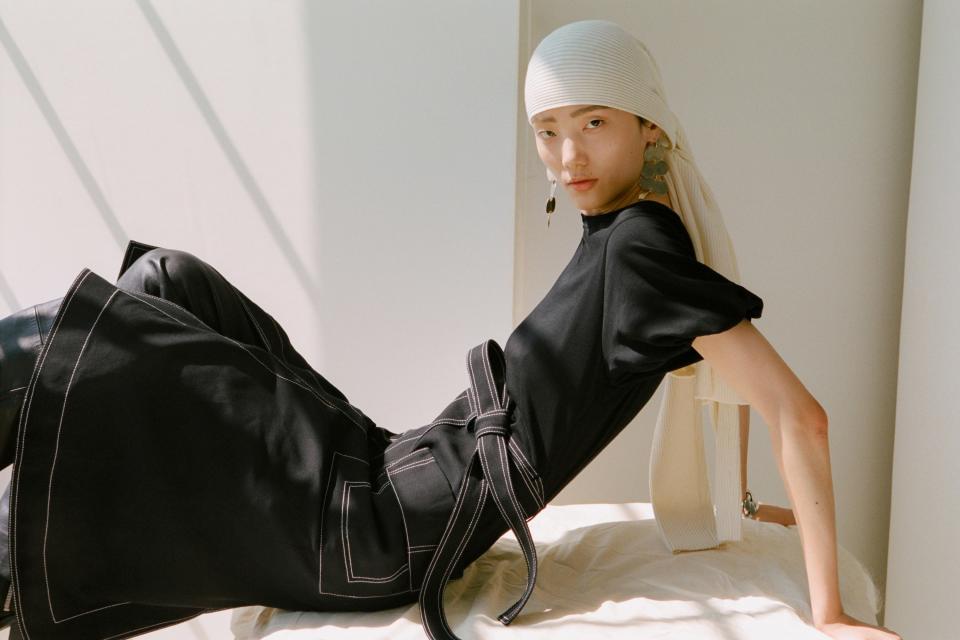
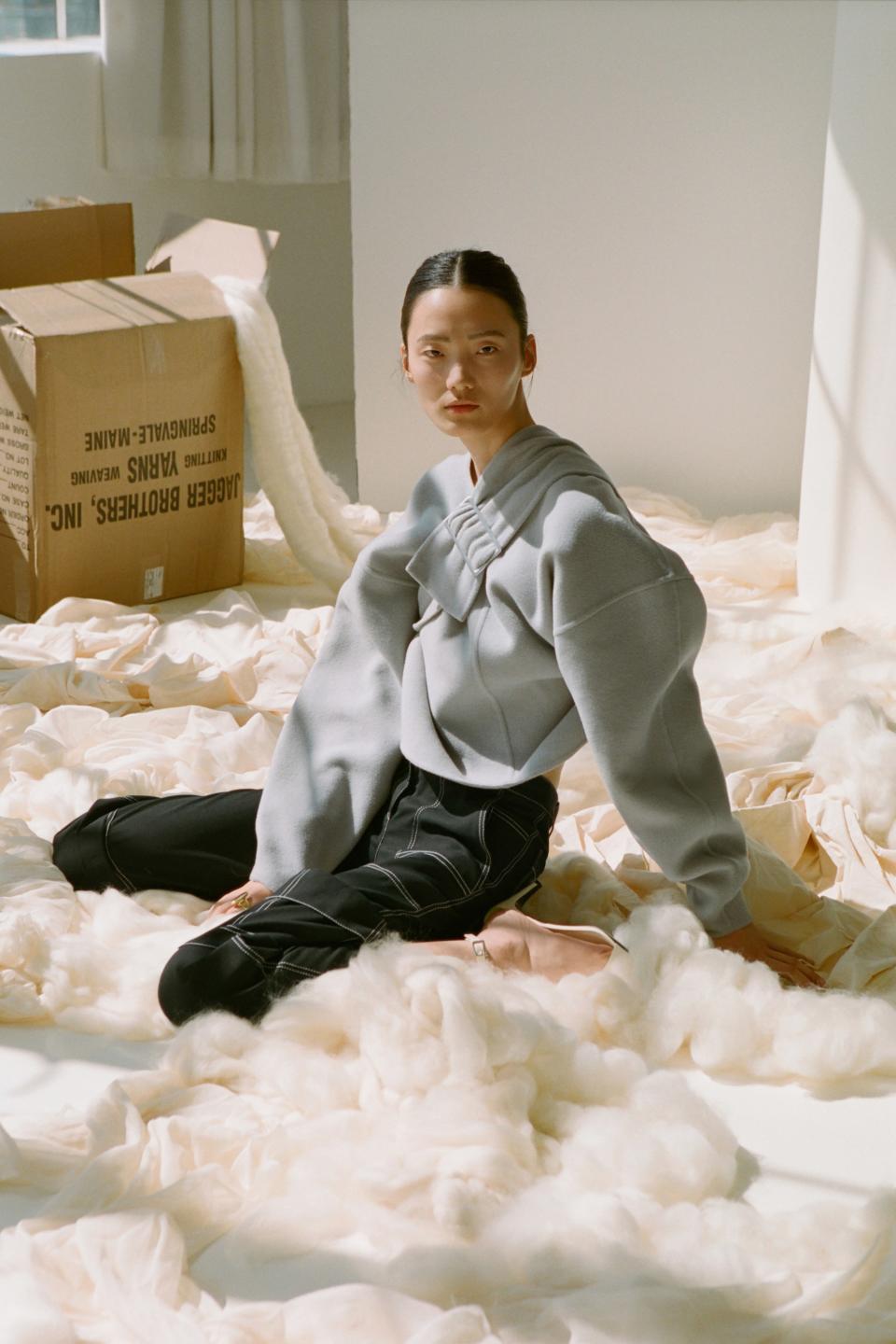
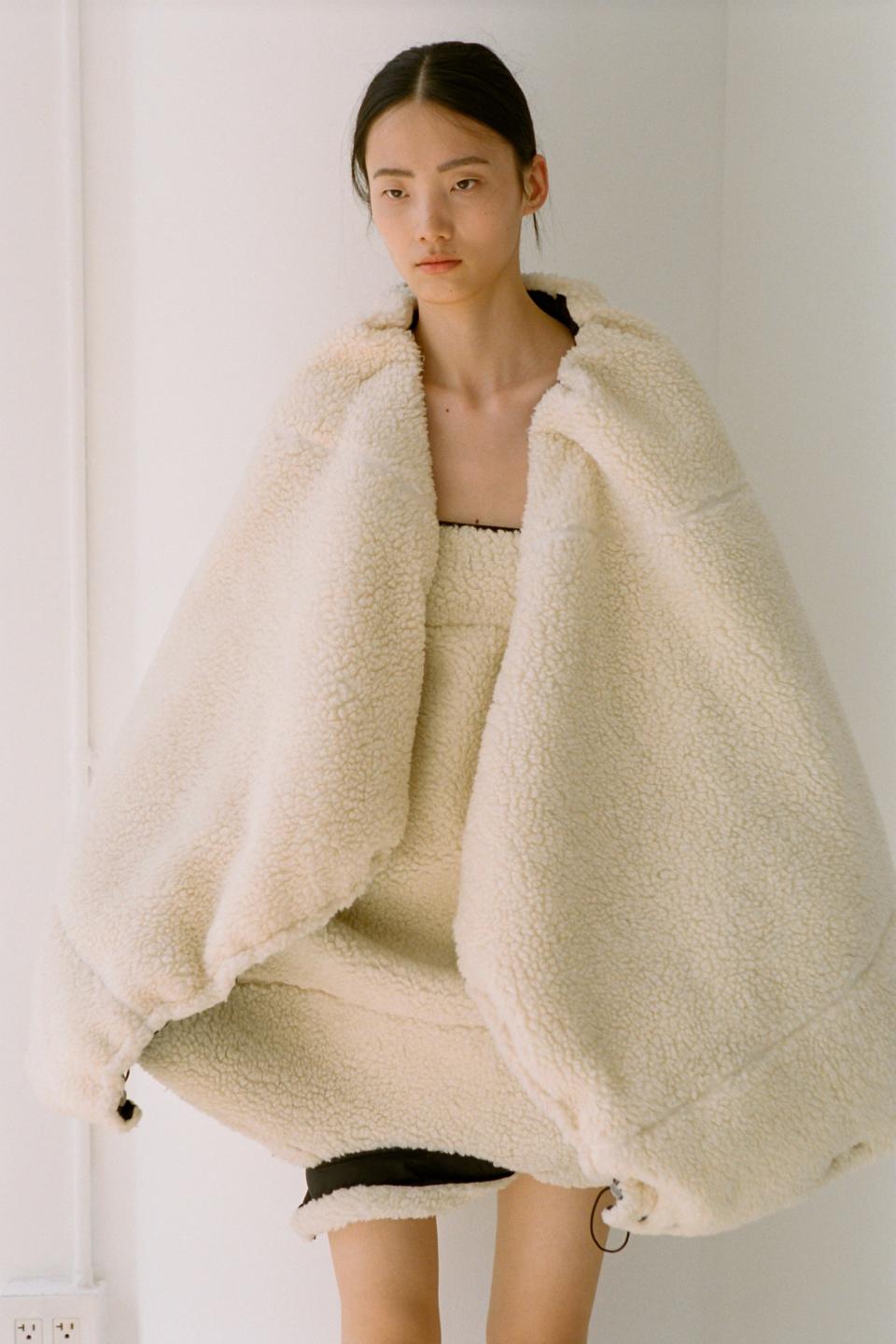
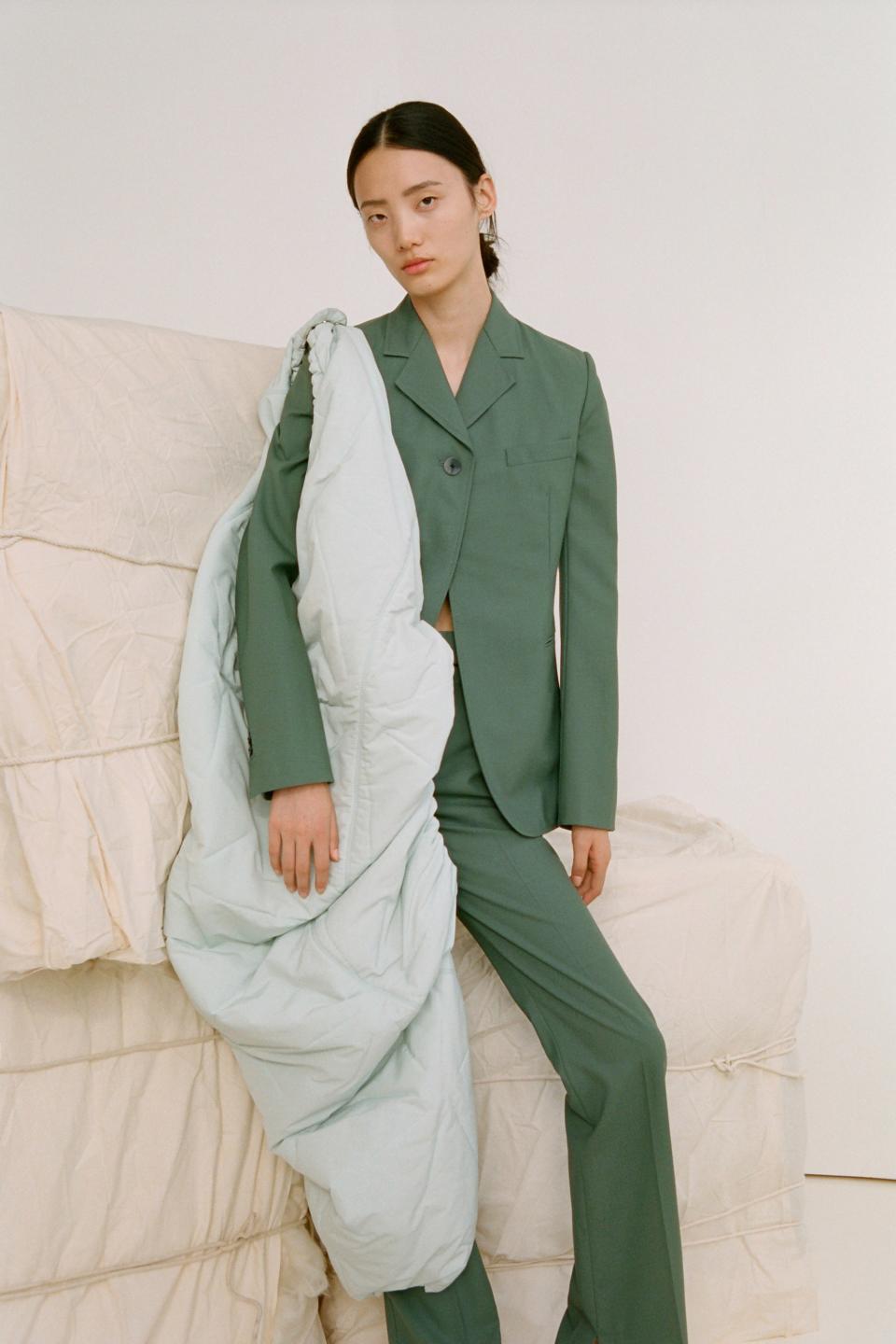
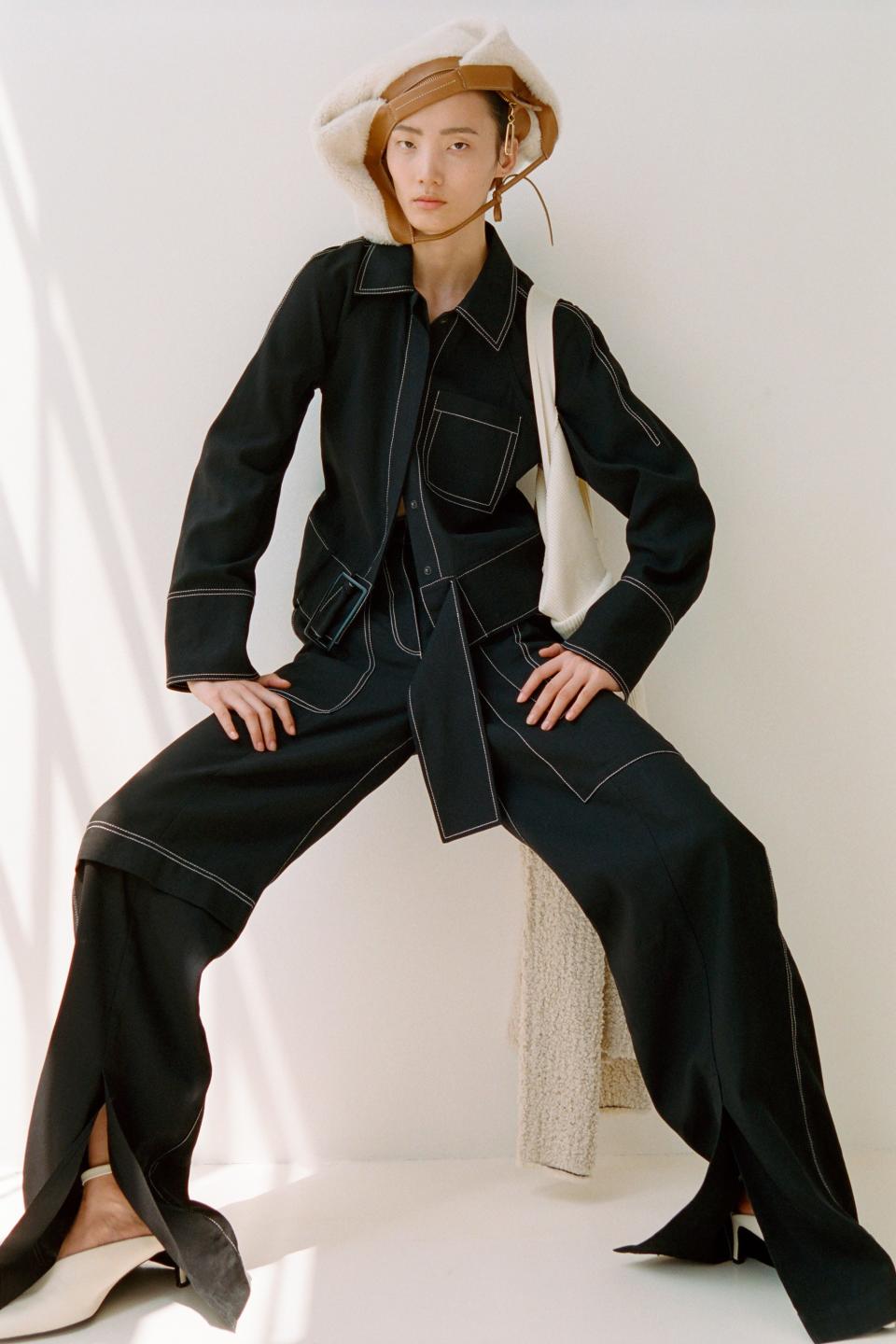
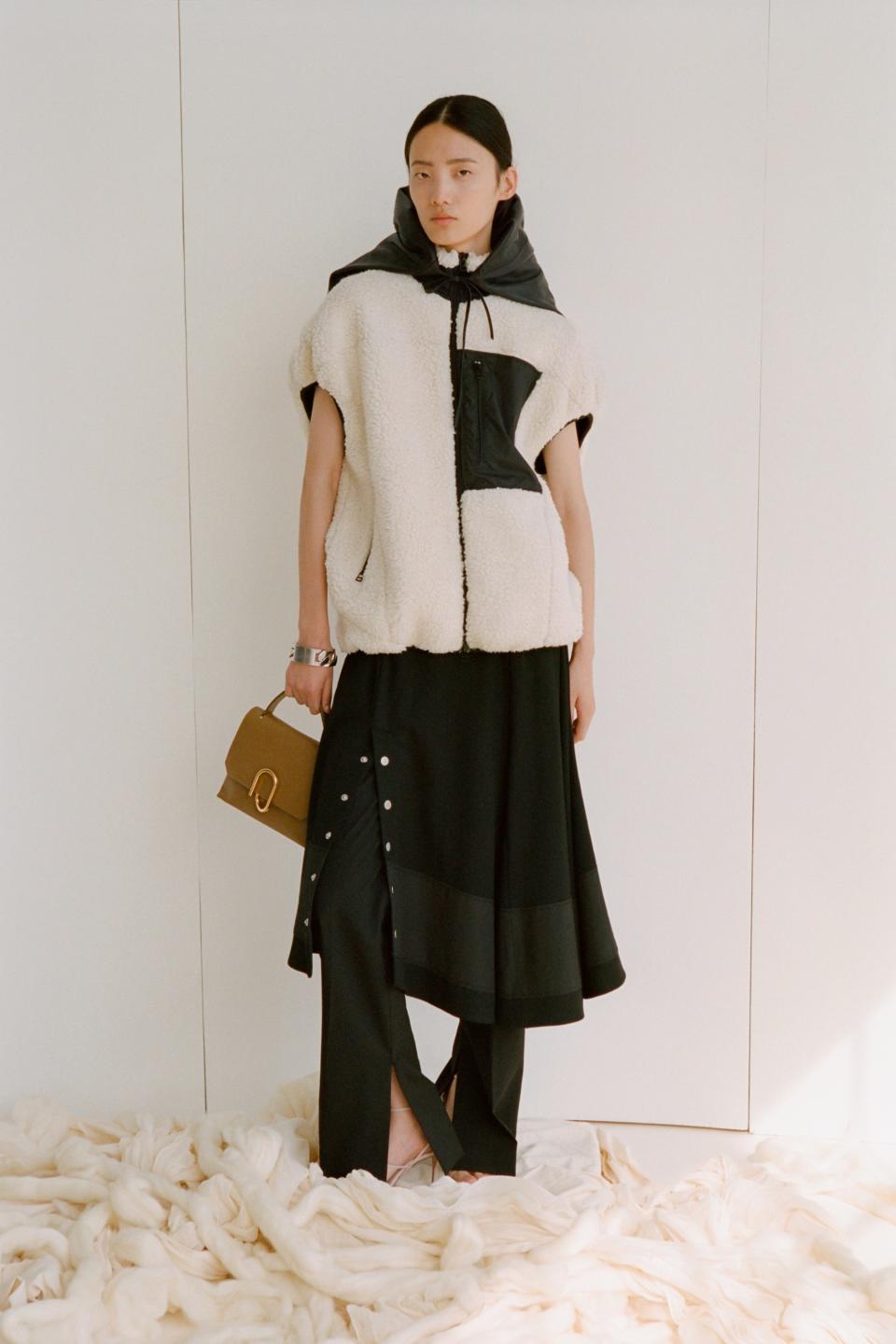
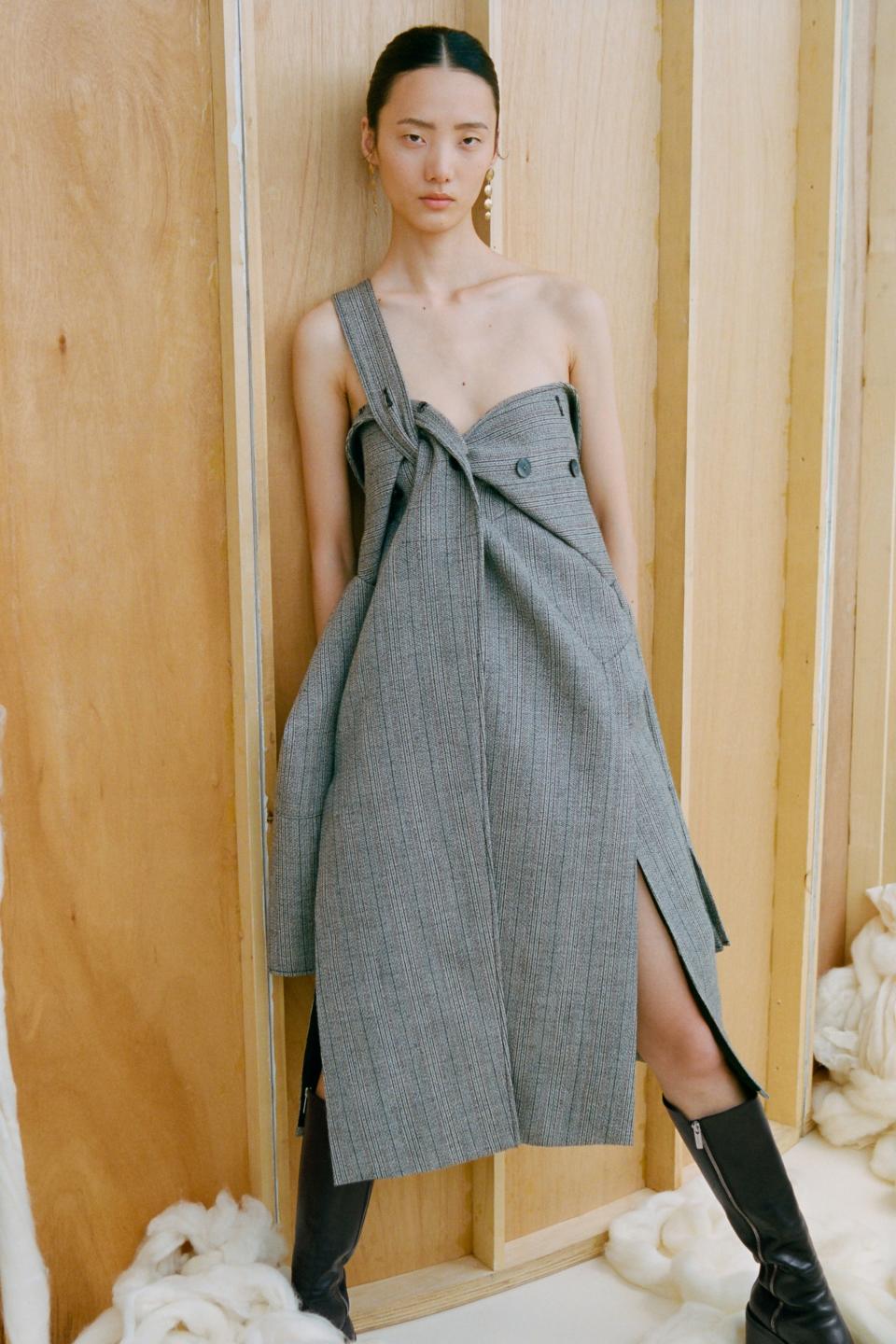
Organic, natural, and recycled materials are key differentiators in the sustainability conversation, and for Lim, they’re a tactile expression of his progress: Spring 2020 comprised 40% sustainable and organic fibers, compared to just 8% in past collections. He hopes to increase that number every season, and a new collaboration with Woolmark inspired him to experiment with natural merino wool in novel ways: fluffing it for an anorak, spinning it ultra-fine for tailoring, and even mixing wool with organic cotton to create “denim” with contrast topstitching. “I wanted to imagine the clothes you’d normally see in nylon or another synthetic, but bring it back to wool,” he explained. “The younger generation is all about denim and athleisure, and denim in particular was an interesting challenge because it traditionally requires so much water and chemicals. This is our take on new, clean denim.”
Organic materials like cotton and cupro are just one area Lim is zeroing in on. The scale of his business had begun to concern him, too. If you’re making too many cotton T-shirts or cupro dresses to sell, they end up sitting in storage (or worse, getting thrown away). So he and his team did a deep analysis of what sells and what feels truly “3.1,” then cut the size of the collections by 40%.
“There are these generalizations that if you produce less clothing, you won’t sell as well,” Lim says. “But for most companies, more than half of the clothes never see the light of day. That’s such a waste. You end up burying yourself alive with this excess stock, and you have more to clean up [in terms of your environmental impact]… As an independent company, we can’t afford that, and the planet really can’t afford that. We’re taking more time to decide what we include in every collection—is this piece really about pure desire? Or is it one of our core items that pay the bills? Or is it just vague? If it’s in-between, you have to cut it out. You have to invest time in editing, discipline, and making sure everyone around you is on the same page,” he continues. “This isn’t just about better fabrics; it’s a complete entrepreneurial transformation.”
In a way, by simplifying and reducing, Lim is channeling his early days as a designer, when his vision was clear and he’d yet to be influenced by retail demands and an increasingly fast system. “I can honestly say we started so humble, and I just want to return to that,” he says. “What I used to do was so siloed, and it was only about what I wanted to make, without consideration of what it meant or how it might help or hurt [people and the planet]. Now we’re trying to readjust and go back to the reasons we started this business, but moving it forward with new intentions we’ve learned through this 15-year journey. It’s like taking the best of what we’ve done and adding this experience [and new knowledge] to it.”
Lim says his less-is-more approach has improved his design process and helped his team “speak the same language” as retailers. “It really clarifies what you’re about [as a designer], and for me it’s really that cool, easy, chic wardrobe for the modern global citizen. If it isn’t something you can imagine in her life, then we probably shouldn’t make space for it. Our shows aren’t making these flashy statements anymore, but if you’re consistent about your [vision] and who your customer is, you can still send a strong message. And if you aren’t into that message, that’s fine—there are other brands for you. With retailers, we don’t have to say, ‘This collection was about this reference or inspiration’ anymore. We can talk about the wardrobe we want to build on, and how they can mix new [collections] with old ones.”
That said, Lim believes retailers are to blame for one of the biggest obstacles designers are facing right now: the hardline regulations they place on packaging and delivering their collections. Nearly every wholesale account requires items to be individually packaged in poly bags, or thin plastic sleeves, to avoid wrinkles and stains and to streamline the unpacking process. Think about the volume of clothes being shipped to those stores and it’s a serious issue. “These stores have specific guidelines, and if you don’t meet them, they charge you [or reject your order],” Lim explains. Those rules exist for a reason, but they haven’t been altered or modernized in decades. If stores adapted to accept other types of packaging, like fabric, compostable, or biodegradable bags (which still present their own issues), it could drastically reduce the amount of plastic being used and wasted in the retail paradigm.
“If they won’t change their rules, you hit a wall as a designer. You can be making all of these improvements, but you still have to follow those archaic guidelines. That’s a huge obstacle—it might sound small, but all of those shipping materials [add up]. For some institutions, they’ve just gotten so big that it’s difficult to [disrupt] the process, but others just fear change.” It’s likely to discourage designers from making certain updates because they don’t have the time or money to risk being rejected by a retailer. Plus, if you’ve invested in becoming a plastic-free company, as Lim has, and it’s neutralized as soon as you ship your clothes to a department store…that feels pretty hypocritical.
The other hurdle Lim foresees in the sustainability movement is price—more specifically, the customer’s understanding of it. He hasn’t needed to raise his prices to accommodate for his new organic materials, but designers often complain that better fabrics are too expensive, and the customer likely won’t take on the extra cost. “What discourages me is that people want a more sustainable future, but aren’t willing to pay for it,” Lim says. “What I try to tell people is that it isn’t just about the product you’re buying, it’s about who made it. And if it’s too good to be true, that isn’t a ‘bargain.’ That bargain was probably paid [for] by a human being who can’t afford to pay for your convenience. It’s really hard with fast fashion prices and these Silicon Valley–backed start-ups, which are just doing the same thing [as fast fashion] but re-marketing it. When you see that $25 sweater in your Instagram feed that everyone is wearing—that’s just dangerous.”
It’s true; your T-shirt shouldn’t cost less than your Chopt salad. But the younger generation does seem to be “waking up” to the realities of fast (or ultra-fast) fashion. Many are choosing to shop at thrift stores or on the resale site Depop (to the point where fast fashion CEOs are noticing). When they’re ready to make more of an investment, they can feel good about buying one of Lim’s wool blazers or simple, yet un-boring dresses.
Those are the kinds of individual changes in behavior that will eventually lead to a sustainable future, coupled with bigger systemic shifts, like retailers adjusting their packaging rules and legislation being put in place for factories and brands. “Nothing that lasts ever starts big,” Lim argues. “It always starts with a drop—these small gestures and slight adjustments, and before we know it, this will be the new way of working. I can’t think of anything natural and lasting that started with a big bang. Usually that disappears. That’s what I always tell my friends when they’re like, ‘What’s the point? Where do I even begin?’ This is the point.”
Consider it all the more reason to take a closer look at your own shopping habits—and maybe pay a visit to Lim’s New York store.
Originally Appeared on Vogue

